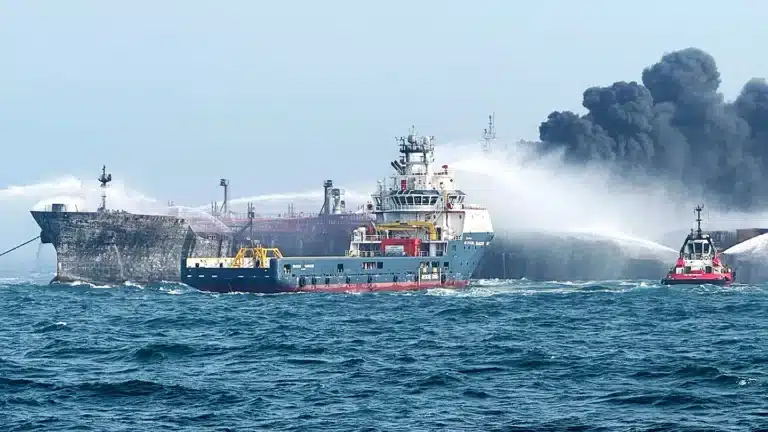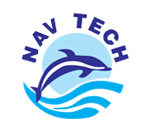Lifting equipment inspection and certification on ships is a critical aspect of maintaining both safety and operational efficiency on board vessels. Lifting equipment such as cranes, hoists, and winches play a vital role in cargo handling, maintenance tasks, and various operations. To ensure that these systems function properly and safely, regular inspection and certification are necessary to avoid failures that could lead to injury or loss.
The Importance of Lifting Equipment Inspection and Certification
Lifting equipment is essential for moving heavy loads on board ships. It is used in cargo operations, maintenance, and even rescue operations, making it a crucial part of a ship’s daily activities. However, over time, lifting appliances are subjected to harsh conditions that can result in wear and tear, material defects, or mechanical issues. Lifting equipment inspection and certification on ships help ensure these systems remain in optimal working condition, safeguarding both the crew and cargo.
Regular inspection and certification verify that the lifting appliances are functioning within their Safe Working Load (SWL) limits and comply with international maritime standards. This process includes checking for defects, material fatigue, and mechanical failures that could compromise the safety and reliability of the equipment. Routine inspections help identify potential problems before they cause significant damage, improving overall safety on board.
The Role of Regular Testing and Maintenance
To ensure lifting equipment remains safe to use, regular testing and maintenance are essential. Ship owners must comply with the regulations set by the Flag State Administration, which outlines the required frequency of testing and certifications. Experts also recommend conducting annual examinations to assess the condition of lifting appliances, ensuring they are free from defects, wear, or other issues that could affect their performance.
Besides visual inspections, these tests check all crucial components, including hoists, pulleys, and wire ropes, for signs of damage or degradation. Any issues detected during these inspections should be addressed immediately by repairing or replacing damaged parts. Proper maintenance ensures that lifting equipment operates reliably and within safe operational parameters.
Outsourcing Testing Services: Ensuring Quality and Compliance
In some cases, the Flag State Administration may outsource the responsibility for inspecting lifting equipment to third-party contractors. While this can provide specialized expertise, it is essential for ship owners to verify that these contractors follow proper testing procedures and adhere to safety standards. During testing, the load applied must align with the SWL to ensure that the appliance is assessed correctly.
To avoid discrepancies and ensure compliance, ship owners should work with certified marine surveyors or experienced contractors with a proven track record in conducting lifting equipment inspections. This ensures that lifting equipment is tested and certified according to regulatory standards.
Crew Training and Risk Assessment: Key Components of Safety
Crew training and maritime risk assessments are integral parts of lifting operations. Human error is responsible for a significant portion of lifting appliance failures, with 59% of incidents attributed to human factors. Proper training ensures that crew members understand how to operate lifting equipment safely, recognize potential risks, and respond effectively in case of emergencies.
Before conducting any lifting operation, a thorough risk assessment should be performed. This process evaluates the potential hazards involved and ensures that safety measures are in place to mitigate those risks. When crews are properly trained and aware of the risks, the likelihood of accidents decreases substantially.
Building a Strong Ship Safety Culture
A strong ship safety culture is essential for reducing the risk of incidents related to lifting equipment. Safety on board should be an ongoing priority, with ship owners actively promoting a culture where equipment is routinely checked, maintained, and replaced when necessary. If lifting equipment shows signs of wear, it should be repaired or replaced promptly to avoid failures during operations.
By fostering a safety-focused environment, ship owners can ensure that all personnel are committed to operating equipment safely, maintaining a high standard of operational excellence and reducing the likelihood of accidents.
How Qualitas Marine Surveyors Can Support Ship Owners
Qualitas Marine Surveyors provides comprehensive services for lifting equipment inspection and certification on ships, helping ship owners meet industry standards and maintain their equipment in safe working condition. Their expert inspections ensure that lifting appliances comply with all necessary regulations, minimizing the risk of failures and accidents.
Partnering with a professional marine surveyor like Qualitas ensures that lifting equipment is thoroughly examined, tested, and certified according to the highest standards. Ship owners can rely on these services to keep their operations running smoothly and safely.
Conclusion
Lifting equipment inspection and certification on ships are fundamental to ensuring safe operations and minimizing risks associated with lifting tasks. Regular testing, ongoing maintenance, and thorough crew training all contribute to maintaining equipment in optimal condition. By investing in these safety measures, ship owners can significantly reduce the risk of equipment failures and human error, ultimately safeguarding the crew, cargo, and vessel.
Creating a robust safety culture and partnering with experienced marine surveyors like Qualitas Marine Surveyors further enhances safety and ensures compliance with regulatory requirements. By prioritizing safety and maintenance, ship owners can ensure that their lifting equipment remains reliable and efficient throughout its service life.








